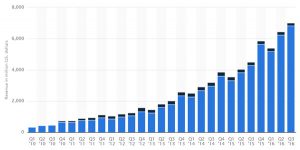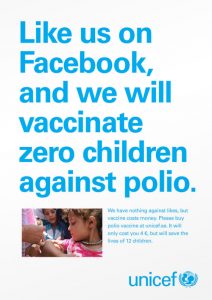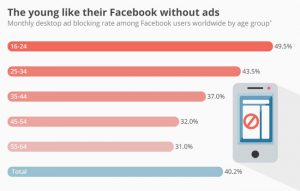Facebook and the Evolution of Likes
Social media has been slowly creeping into our lives since the early 2000’s. Originating in the threads of message board forums, what was once a place to share ideas and life tips has evolved into a key component of our social fabric. In particular, Facebook has become a social media juggernaut and we’ve all been watching closely to see where it’s headed and what it might mean for our relationships. Let’s take a look at what social media has become and what the Evolution of Likes means to users and advertisers on social platforms.
Just a few years back, there was a push to get businesses engaged with social media. We all wanted to tap into a network of hundreds of sites with billions of users. There were pay-for-impression options for advertisers, but no one knew how to judge the performance of a specific campaign. All we had for evaluation was number of likes and we were left waiting for something to gauge return on investment.
Building Ads that Work (and make money)
A lot has changed in social media advertising as Facebook has matured. There is now an established money stream – built much like the digital remarketing efforts that now supports most of America’s newspapers, Facebook designed a platform that gives us insight into the performance of a specific page and allows us to reach targeted demographics with a variety of ads – most of which are innocuous enough to pass as posts from friends.

Facebook revenue by quarter
This has led to a major change in the way we, as advertisers, measure success of campaigns. We can not only see the engagements at a higher level, we can also view campaign clicks, CPM, CPA, and other KPI’s that give us a deeper look at statistical performance of ad spend.
Facebook likes for businesses have become a popularity contest and are no longer a reliable measure of consumer engagement.
-Burt Cavanaugh, Lion Tree Group
Turning Down the Volume on Likes
But the most dramatic change in 2016 has been the shift away from likes. Less than a year ago, you could reach all of your “fans” with every post. As the page feed crowding has worsened, Facebook took away the guaranteed impression. A post will be tested with a few local fans and if they like it, it will continue to serve to your fan base. But if it doesn’t get immediate engagement, Facebook will shut down the feed. If you want to reach everyone that likes your page, you’ll need to pay.

likes don’t get it done
Next Gen Algorithm
In the same way that Google and Bing have continually evolving algorithms for their search engines, Facebook has had to adapt to shifting pressures from both users and advertisers. From a user experience, the explosion of ads has engorged already overstuffed news feeds. For advertisers, the competition is starting to crowd out those looking for a cheap fix.

Ad blocking is popular with younger users
The demographics categories continue to expand and will ultimately be the advantage that will propel Facebook into the future. As for the evolution of likes and advertising opportunities, the constant beta testing will no doubt yield good performing options for advertisers. The engagements are there, but is the next generation of Facebook going to embrace it? We’ll have to wait and see.
About the Author
Ben Lindberg, CR is a partner in Lion Tree Group, a marketing agency in Madison, WI. His expertise is in multi-platform brand messaging and consumer engagement. As an industry insider, he has walked the walk and developed a winning marketing strategy from experience with one of Wisconsin’s largest remodeling companies. His agency specializes in digital design and branding face lifts. He regularly blogs on his company’s blog: The Bark and Roar.







